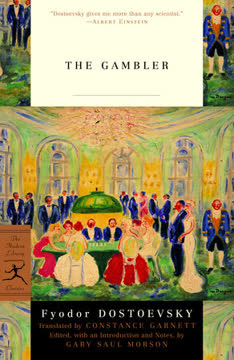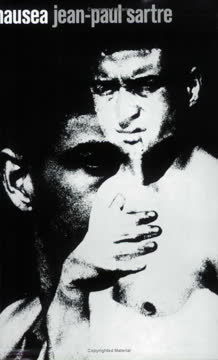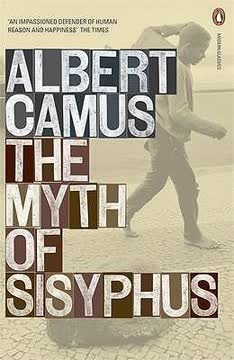Key Takeaways
1. Personality Study: From Global Theories to Individual Facets
We have seen the focus of personality study shift from global theories, beginning with Sigmund Freud’s 19th-century psychoanalytic theory of neuroses, to 21st-century explorations of more limited personality dimensions.
Evolution of Focus. The study of personality has transitioned from broad, all-encompassing theories, such as Freud's psychoanalysis, to more focused investigations of specific personality traits and dimensions. This shift reflects a move towards more testable and empirically supported research.
Global vs. Limited-Domain. Early theories aimed to explain the entire human personality, while contemporary research often examines specific facets like sensation-seeking, optimism, or locus of control. This allows for more in-depth analysis and practical application.
Contemporary Relevance. Modern personality research emphasizes diversity, considering factors like gender, ethnicity, culture, and age. This inclusive approach acknowledges the complexity of human nature and avoids generalizations based on limited populations.
2. Theorists' Lives Shape Their Theories
Major changes for this edition include new biographical material for the theorists, to suggest, where warranted, how the development of their theory may have been influenced by events in their personal and professional lives.
Subjectivity in Science. The personal experiences and social contexts of personality theorists often influence the development of their ideas. Understanding these influences provides valuable insights into the origins and biases of different theories.
Examples of Influence:
- Freud's own sexual conflicts and family dynamics shaped his psychoanalytic theory.
- Adler's childhood experiences with inferiority fueled his focus on striving for superiority.
- Horney's challenges as a woman in a male-dominated field led to her feminist perspective on psychology.
Autobiographical Nature. Many personality theories can be seen as disguised autobiographies, reflecting the theorists' attempts to understand themselves and their place in the world. Recognizing this subjectivity helps us critically evaluate the strengths and limitations of each theory.
3. Diversity Enriches Personality Theory
Contemporary personality theory and research strives to be inclusive, studying the influences of age, gender, race, ethnic origin, religious beliefs, sexual orientation, and child-rearing practices.
Beyond Homogeneity. Early personality theories were often based on limited samples, such as wealthy white European women or American college men. Contemporary research recognizes the importance of studying diverse populations to create more inclusive and valid theories.
Cultural Impact. Cultural forces significantly shape personality development, influencing traits like introversion/extraversion, self-enhancement, and emotional expression. Cross-cultural psychology explores these differences, highlighting the need for culturally sensitive assessment and interpretation.
Gender and Ethnicity. Gender and ethnic backgrounds also influence personality, with research documenting differences in emotional complexity, anxiety levels, and responses to stress. Recognizing these differences is crucial for avoiding bias and promoting equitable treatment.
4. Assessment: Measuring the Invisible
The assessment of personality is a major area of application of psychology to real-world concerns.
Real-World Applications. Personality assessment plays a crucial role in various fields, including clinical psychology, education, and industrial/organizational psychology. Accurate assessment is essential for diagnosis, treatment planning, and personnel selection.
Key Qualities:
- Reliability: Consistency of test results over time and across different administrations.
- Validity: The extent to which a test measures what it is intended to measure.
Methods of Assessment:
- Self-report inventories (e.g., MMPI, CPI)
- Projective techniques (e.g., Rorschach, TAT)
- Clinical interviews
- Behavioral assessment
- Thought and experience sampling
5. Research Methods: Illuminating Personality
One criterion for a useful personality theory is that it must stimulate research.
Objective Observation. The foundation of scientific research in personality is objective observation. This is the defining characteristic that separates scientific inquiry from speculation.
Major Research Methods:
- Clinical Method: In-depth case studies to understand individual experiences.
- Experimental Method: Controlled experiments to determine cause-and-effect relationships.
- Correlational Method: Statistical analysis to identify relationships between variables.
Idiographic vs. Nomothetic. Research can be idiographic (intensive study of a few individuals) or nomothetic (statistical analysis of large groups). Both approaches contribute to our understanding of personality.
6. Theories: Frameworks for Understanding
A theory provides the framework for simplifying and describing empirical data in a meaningful way.
Organizing Data. Theories provide a framework for organizing and interpreting empirical data, transforming raw observations into meaningful patterns. They act as maps, guiding our understanding of complex phenomena.
Formal vs. Personal Theories. Formal theories are based on data from large, diverse samples and are tested repeatedly against reality. Personal theories, on the other hand, are based on limited observations and are often subjective and resistant to change.
Subjectivity in Theories. Personality theories, while aiming for objectivity, are inevitably influenced by the theorist's personal experiences and values. Understanding these influences is crucial for critical evaluation.
7. Freud's Psychoanalysis: Unconscious and Instincts
Instincts: The Propelling Forces of the Personality
Unconscious Forces. Freud's psychoanalytic theory emphasizes the role of unconscious forces, biologically based drives, and early childhood conflicts in shaping personality. His system was based largely on sessions with wealthy White European females.
Key Concepts:
- Instincts: The propelling forces of personality (life and death instincts).
- Levels of Personality: Conscious, preconscious, and unconscious.
- Structures of Personality: Id, ego, and superego.
- Defense Mechanisms: Strategies to protect the ego from anxiety.
- Psychosexual Stages: Oral, anal, phallic, latency, and genital.
Criticisms and Legacy. Despite its controversial nature and limited empirical support, psychoanalysis has had a profound influence on psychology and popular culture.
8. Neopsychoanalytic Theories: Beyond Freud's Shadow
The neopsychoanalytic theorists present a more optimistic and flattering picture of human nature.
Revisions and Rebellions. Neopsychoanalytic theorists, such as Jung, Adler, and Horney, built upon or reacted against Freud's ideas, offering alternative perspectives on personality development.
Key Differences:
- Less emphasis on instincts and more on social and cultural factors.
- A more optimistic view of human nature and the potential for growth.
- Greater focus on the ego and conscious processes.
Individual Contributions:
- Jung: Collective unconscious, archetypes, and psychological types.
- Adler: Inferiority feelings, striving for superiority, and social interest.
- Horney: Basic anxiety, neurotic needs, and feminist psychology.
9. Trait Theories: Identifying Core Characteristics
Personality is that which permits a prediction of what a person will do in a given situation.
Enduring Dispositions. Trait theories focus on identifying and measuring stable, enduring characteristics that influence behavior across situations. These traits are often seen as genetically influenced.
Key Figures:
- Allport: Emphasized the uniqueness of the individual and the concept of functional autonomy.
- Cattell: Used factor analysis to identify 16 basic source traits.
- Eysenck: Proposed three dimensions of personality: extraversion, neuroticism, and psychoticism.
- McCrae and Costa: Developed the Five-Factor Model (Big Five): neuroticism, extraversion, openness, agreeableness, and conscientiousness.
Behavioral Genetics. Research in behavioral genetics supports the notion that personality traits are influenced by inherited biological factors.
10. Humanistic Theories: Emphasizing Growth and Potential
What humans can be, they must be. They must be true to their own nature.
Positive View of Humanity. Humanistic theories, exemplified by Maslow and Rogers, emphasize human strengths, virtues, and the potential for growth and self-actualization.
Key Concepts:
- Maslow: Hierarchy of needs, self-actualization, and metamotivation.
- Rogers: Actualization tendency, organismic valuing process, and conditions of worth.
Focus on the Self. Humanistic theories emphasize the importance of the self-concept and the individual's subjective experience. They see people as active, creative beings striving for fulfillment.
11. Cognitive Theories: The Power of Thought
It occurred to me that what seemed true of myself was probably no less true of others. If I initiated my actions, so did they.
Conscious Mental Activities. Cognitive theories, such as Kelly's personal construct theory, focus on how people perceive, interpret, and organize their experiences. These cognitive processes are seen as the primary determinants of behavior.
Personal Constructs. Kelly proposed that people develop personal constructs, or unique ways of understanding the world, which they use to anticipate and predict events. These constructs are bipolar and subject to revision.
Constructive Alternativism. Kelly's theory emphasizes the freedom to revise and replace constructs, highlighting the active role of the individual in shaping their own reality.
12. Behavioral Theories: Shaping Behavior Through Learning
It is the environment which must be changed.
External Influences. Behavioral theories, exemplified by Skinner's reinforcement theory, focus on overt behavior and the external stimuli that shape it. Internal states and unconscious forces are considered irrelevant.
Operant Conditioning. Skinner's approach emphasizes operant conditioning, in which behavior is modified by its consequences (reinforcement and punishment). He identified different schedules of reinforcement and their effects on behavior.
Behavior Modification. Skinner's principles have been applied in behavior modification programs to treat a variety of disorders and promote desirable behaviors.
Last updated:
FAQ
What is "Theories of Personality" by Duane P. Schultz about?
- Comprehensive overview: The book surveys nearly two dozen major personality theories, from Freud’s psychoanalysis to contemporary positive psychology, offering a broad understanding of the field.
- Integration of perspectives: Schultz emphasizes that no single theory fully explains personality, but each contributes important insights into what shapes human behavior and individuality.
- Focus on diversity: The text explores how historical, cultural, genetic, environmental, and developmental factors influence personality, highlighting the importance of diversity in research and theory.
Why should I read "Theories of Personality" by Duane P. Schultz?
- Beginner-friendly structure: The book is designed for students and newcomers, with clear outlines, summaries, review questions, and glossaries to aid learning.
- Balanced and up-to-date: It provides historical context, biographical details, research updates, and cultural considerations, ensuring a well-rounded understanding.
- Practical relevance: Schultz links theory to real-world applications in assessment, therapy, health, and relationships, making the content useful beyond the classroom.
What are the key takeaways from "Theories of Personality" by Duane P. Schultz?
- Multiple influences: Personality is shaped by genetic, environmental, social, and cultural factors, with learning and parental styles playing significant roles.
- No single answer: Each theory offers unique insights, but a complete understanding of personality requires integrating multiple perspectives.
- Personality development: Traits show both stability and change across the lifespan, and subjective well-being is closely tied to personality characteristics and social support.
How does "Theories of Personality" by Duane P. Schultz address the role of genetics and environment in personality?
- Genetic predispositions: The book highlights strong evidence for inherited traits, supported by twin and adoption studies across cultures.
- Environmental shaping: Family, culture, birth order, and societal events significantly influence personality development and expression.
- Learning as mediator: Environmental effects are primarily exerted through learning processes, which modify or reinforce genetic tendencies.
What are the main personality assessment methods discussed in "Theories of Personality" by Duane P. Schultz?
- Self-report inventories: Objective tests like the MMPI, CPI, and MBTI assess personality traits and types through structured questionnaires.
- Projective techniques: Methods such as the Rorschach Inkblot Test and Thematic Apperception Test explore unconscious motives by interpreting ambiguous stimuli.
- Interviews and observation: Clinical interviews, behavioral assessments, and experience sampling provide in-depth, contextual understanding of personality.
How does "Theories of Personality" by Duane P. Schultz explain Freud’s psychoanalytic theory and its assessment methods?
- Unconscious drives: Freud’s theory centers on unconscious forces, sexual and aggressive drives, and early childhood conflicts shaping personality.
- Personality structures: The id, ego, and superego interact dynamically, often producing anxiety and defense mechanisms.
- Assessment methods: Techniques like free association and dream analysis aim to uncover repressed material, though they rely heavily on subjective interpretation.
What are the key differences between Freud’s psychoanalysis and Jung’s analytical psychology in "Theories of Personality" by Duane P. Schultz?
- Broader psychic energy: Jung expanded libido to include all psychic energy, not just sexual, and emphasized future aspirations.
- Collective unconscious: Jung introduced universal archetypes shared across humanity, contrasting with Freud’s focus on personal unconscious.
- Personality types: Jung’s theory includes attitudes (extraversion/introversion) and functions (thinking, feeling, sensing, intuiting), resulting in eight psychological types.
How does "Theories of Personality" by Duane P. Schultz present the neopsychoanalytic theorists and their contributions?
- Break from Freud: Theorists like Jung, Adler, Horney, and Murray moved away from Freud’s instinct-driven, deterministic view.
- Social and cultural focus: They emphasized interpersonal relationships, cultural influences, and conscious goals in personality development.
- Unique concepts: Adler introduced inferiority and compensation, Horney focused on neurotic needs and feminine psychology, and Murray developed the concept of needs and presses.
What is Erik Erikson’s life-span approach to personality development in "Theories of Personality" by Duane P. Schultz?
- Eight psychosocial stages: Erikson’s model covers development from infancy to old age, with each stage presenting a unique crisis to resolve.
- Identity and virtues: Successful resolution leads to strengths like hope, will, and wisdom, forming a cohesive ego identity.
- Cultural and social integration: Erikson’s theory incorporates biological, social, and cultural factors, emphasizing lifelong growth and adaptation.
How does "Theories of Personality" by Duane P. Schultz explain trait theories, including the Five-Factor Model?
- Trait dimensions: The book covers Allport’s functional autonomy, Cattell’s 16 source traits, and Eysenck’s three-factor model (extraversion, neuroticism, psychoticism).
- Five-Factor Model: McCrae and Costa’s model (neuroticism, extraversion, openness, agreeableness, conscientiousness) is highlighted for its cross-cultural validity and predictive power.
- Biological basis: Trait theories emphasize heredity, with genetic studies supporting the stability and universality of major personality dimensions.
What are the main humanistic and cognitive-behavioral theories discussed in "Theories of Personality" by Duane P. Schultz?
- Maslow’s hierarchy: Maslow’s theory arranges needs from physiological to self-actualization, distinguishing deficiency from growth needs.
- Rogers’s person-centered theory: Emphasizes the actualizing tendency, self-concept, unconditional positive regard, and the fully functioning person.
- Cognitive and behavioral approaches: The book covers Kelly’s personal construct theory, Skinner’s reinforcement theory, Bandura’s social learning and self-efficacy, and Rotter’s locus of control.
How does "Theories of Personality" by Duane P. Schultz address happiness, well-being, and positive psychology?
- Subjective well-being: The book links happiness to social support, optimism, and personality traits like extraversion and low neuroticism.
- Learned helplessness and optimism: Seligman’s research shows that optimistic explanatory styles protect against depression and health problems, while pessimism increases risk.
- Positive psychology movement: Schultz highlights the shift toward studying happiness, fulfillment, and strengths, emphasizing practical strategies for enhancing well-being and success.
Review Summary
Theories of Personality receives mostly positive reviews, praised for its accessible writing style and comprehensive coverage of personality theories. Readers appreciate the biographical details of theorists and how their lives influenced their work. The book is considered valuable for both psychology students and general readers interested in understanding personality. Some criticize it for being too basic or lacking depth in certain areas. Overall, it's seen as an informative introduction to personality psychology, with a few readers finding it dry or boring.
Similar Books
Download PDF
Download EPUB
.epub digital book format is ideal for reading ebooks on phones, tablets, and e-readers.










